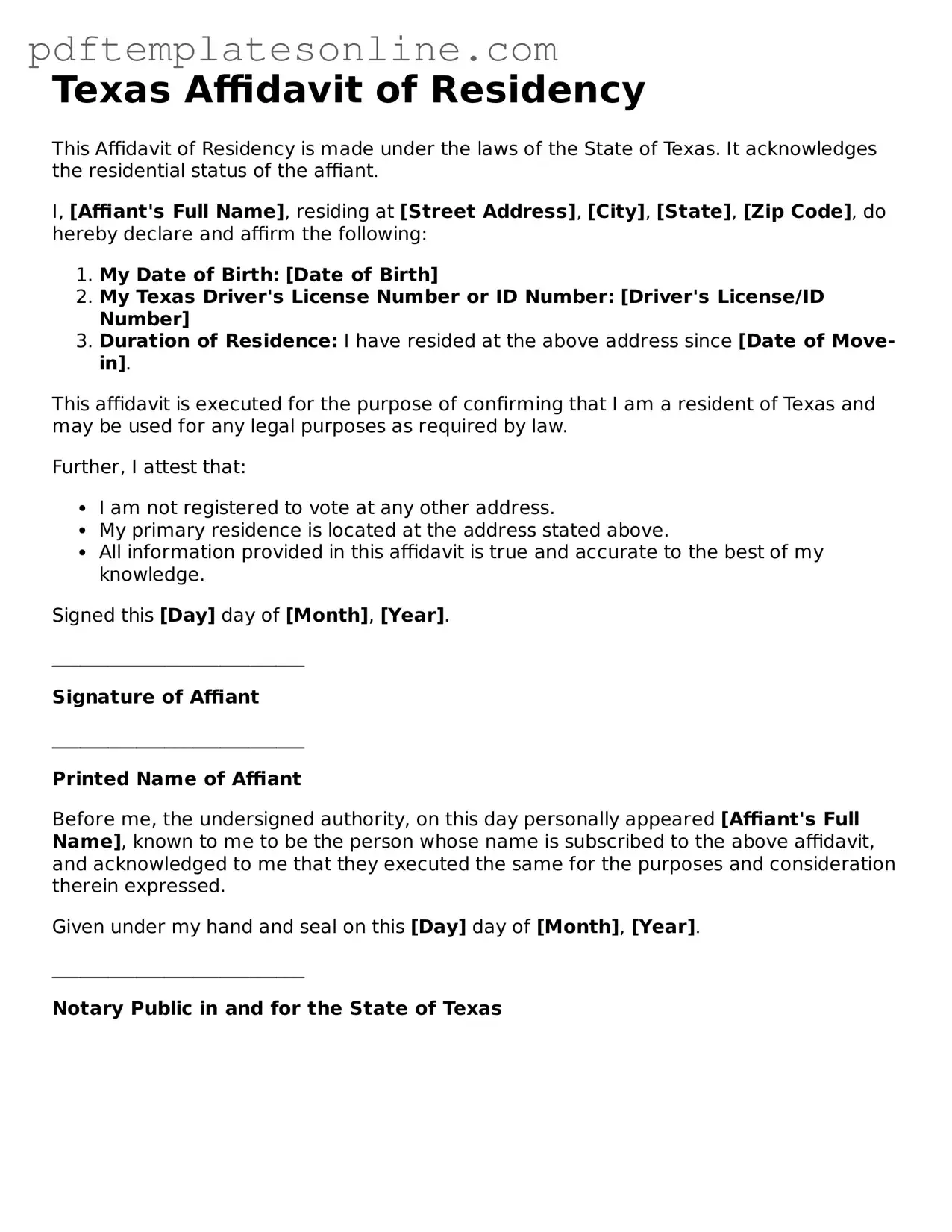Filling out the Texas Affidavit of Residency form can be straightforward, but several common mistakes often occur. One frequent error is failing to provide accurate information. Individuals may inadvertently enter incorrect names, addresses, or dates, which can lead to complications in processing the affidavit. It is crucial to double-check all details to ensure they reflect the correct information.
Another common mistake is not signing the affidavit. Some individuals may overlook this important step, thinking that completing the form is sufficient. However, without a signature, the affidavit is not considered valid. It is essential to sign the document in the designated area to affirm the truthfulness of the information provided.
In addition to forgetting to sign, people sometimes neglect to date the affidavit. The date is significant as it indicates when the affidavit was completed. Omitting this detail can create confusion or delays in processing. Always include the date to ensure clarity and to establish a timeline for the information presented.
Some individuals may also fail to have the affidavit notarized. Texas law requires that affidavits be notarized to confirm the identity of the signer and to validate the document. Without a notary's signature and seal, the affidavit may not be accepted. It is advisable to find a notary public to complete this step before submitting the form.
Lastly, people often overlook the importance of understanding the purpose of the affidavit. The Texas Affidavit of Residency is used to verify residency for various legal and administrative purposes. Misunderstanding its purpose can lead to incomplete or irrelevant information being provided. It is beneficial to fully comprehend the requirements of the affidavit before filling it out to ensure that it meets the necessary criteria.
